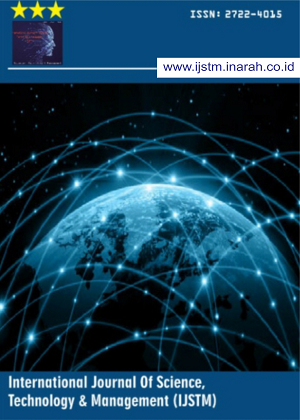The development of Hemodialysis Units in the Army Hospital
Abstract
Patients with renal disease require special care.This study aims to develop a hemodialysis unit in the Army Hospital that require the act of washing the blood as a form to improve health services for patients with kidney failure. In this study, the majority of patients covered by the National Health insurance. Research methods namely method a case study with quantitative descriptive analysis.The results of this study show that the development of the hemodialysis unit will give a positive impact for the patient and for the hospital. The review will be the addition of hemodialysis machines, the addition of a new building, the addition of shift nurse can be seen that all these options will be profitable in the foreseeable future. This of course can make the best judgment for the Hospital in determining a decision for the sake of improving health care for the patient.
Downloads
References
[2] Kemenkes RI, “Infodatin Situasi Penyakit Ginjal Kronis,” Pus. Data Dan Inf. Kementeri. Kesehat. RI, 2017.
[3] Badan Penelitian Dan Pengembangan Kesehatan, “Riset Kesehatan Dasar (RISKESDAS) 2013,” Lap. Nas. 2013, 2013, Doi: 1 Desember 2013.
[4] K. R. Balitbang, “Riset Kesehatan Dasar: Riskesdas.,” Jakarta:Balitbang Kemenkes RI, 2013. .
[5] K. Kusniawati, “Hubungan Kepatuhan Menjalani Hemodialisis Dan Dukungan Keluarga Dengan Kualitas Hidup Pasien Gagal Ginjal Kronik Di Ruang Hemodialisa Rumah Sakit Umum Kabupaten Tangerang,” J. Med. (Media Inf. Kesehatan), 2018, Doi: 10.36743/Medikes.V5i2.61.
[6] T. Muzaenah And S. N. N. Makiyah, “Pentingnya Aspek Spiritual Pada Pasien Gagal Ginjal Kronik Dengan Hemodialisa: A Literature Review,” Herb-Medicine J., 2018, Doi: 10.30595/Hmj.V1i2.3004.
[7] A. Ebersohn And R. Brits, “Continuous Renal Replacement Therapy,” In Handbook Of ICU Therapy, Third Edition, 2015.
[8] R. Zasra, H. Harun, And S. Azmi, “Indikasi Dan Persiapan Hemodialis Pada Penyakit Ginjal Kronis,” J. Kesehat. Andalas, 2018, Doi: 10.25077/Jka.V7i0.847.
[9] J. K. Eriksson, M. Neovius, S. H. Jacobson, C. G. Elinder, And B. Hylander, “Healthcare Costs In Chronic Kidney Disease And Renal Replacement Therapy: A Population-Based Cohort Study In Sweden,” BMJ Open, 2016, Doi: 10.1136/Bmjopen-2016-012062.
[10] L. Mushi, P. Marschall, And S. Fleßa, “The Cost Of Dialysis In Low And Middle-Income Countries: A Systematic Review,” BMC Health Services Research. 2015, Doi: 10.1186/S12913-015-1166-8.
[11] W. Prodjosudjadi, “Incidence, Prevalence, Treatment And Cost Of End-Stage Renal Disease In Indonesia,” Ethnicity And Disease. 2006.
[12] M. Dewi, “Kebijakan Transplantasi Ginjal Di Indonesia,” Bul. Penelit. Sist. Kesehat., 2018, Doi: 10.22435/Hsr.V21i1.97.
[13] Pusat Data Dan Informasi Kemenkes RI, “Situasi Penyakit Ginjal Kronis,” Infodatin, 2017.
[14] 2018 Indonesian Renal Registry, “10th Report Of Indonesian Renal Registry. Jakarta: Pernefri,” Holistik J. Kesehat., 2018.
[15] A. C. Webster, E. V. Nagler, R. L. Morton, And P. Masson, “Chronic Kidney Disease,” The Lancet. 2017, Doi: 10.1016/S0140-6736(16)32064-5.
[16] P. Astuti, T. Herawati, And I. Made Kariasa, “Faktor-Faktor Yang Berhubungan Dengan Self Management Pada Pasien Hemodialisis Di Kota Bekasi,” Heal. Care Nurs. J., 2018.
[17] A. Rastogi And G. M. Chertow, “Mandating Staffing Ratios In Hemodialysis Facilities,” Clin. J. Am. Soc. Nephrol., 2018, Doi: 10.2215/Cjn.03030318.
[18] M. Elseviers, J. Y. De Vos, M. Harrington, A. Zampieron, P. Ormandy, And T. Kafkia, “Comparison Of Renal Care Practice In Europe: Centre And Patient Characteristics,” EDTNA-ERCA J., 2006, Doi: 10.1111/J.1755-6686.2006.Tb00438.X.
[19] R. Fajrunni’mah, D. Lestari, And A. Purwanti, “Faktor Pendukung Dan Penghambat Penderita Diabetes Melitus Dalam Melakukan Pemeriksaan Glukosa Darah,” Glob. Med. Heal. Commun., 2017, Doi: 10.29313/Gmhc.V5i3.2181.
[20] H. Hammad, K. Rizani, And R. Agisti, “Tingkat Kelelahan Perawat Di Ruang Icu,” Dunia Keperawatan, 2018, Doi: 10.20527/Dk.V6i1.4957.
[21] F. T. Utami, N. T. Indrianasari, And K. Ifa, “Mekanisme Pencatatan Dana Bpjs Dalam Laporan Keuangan Rumah Sakit Wijaya Kusuma Lumajang Tinjauan Psak No . 45 ( Studi Kasus Pada Rumah Sakit Wijaya Kusuma Lumajang ),” E-Issn : 2622-304X, P-Issn : 2622-3031, 2019.
[22] R. Desima, “Tingkat Stres Kerja Perawat Dengan Perawat Caring Perawat,” Keperawatan, 2015.





























